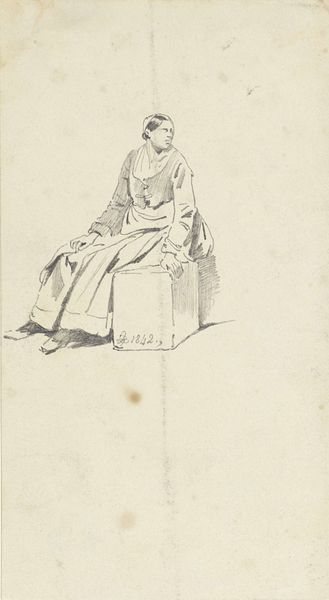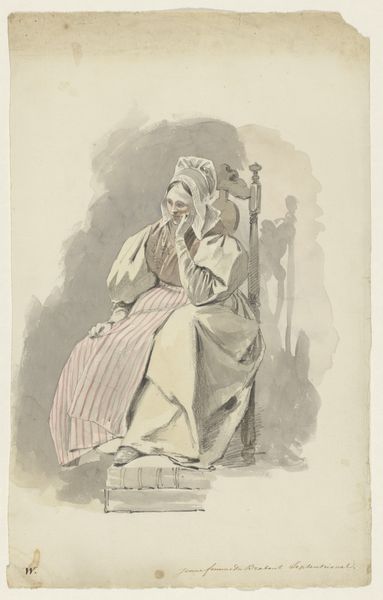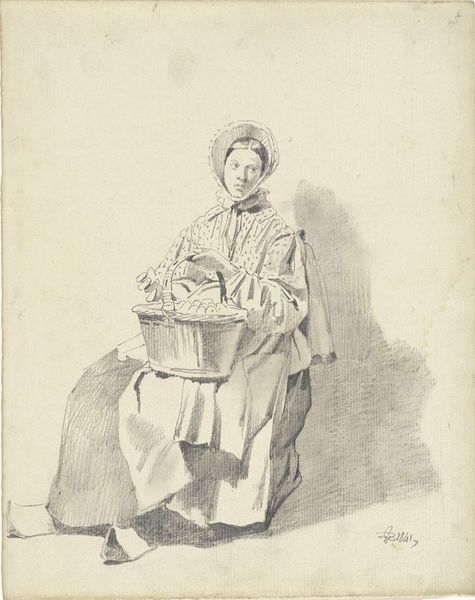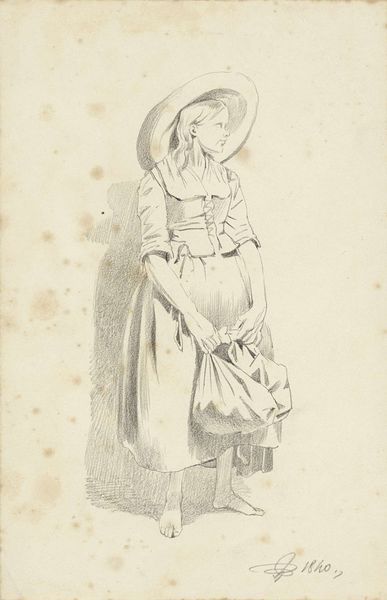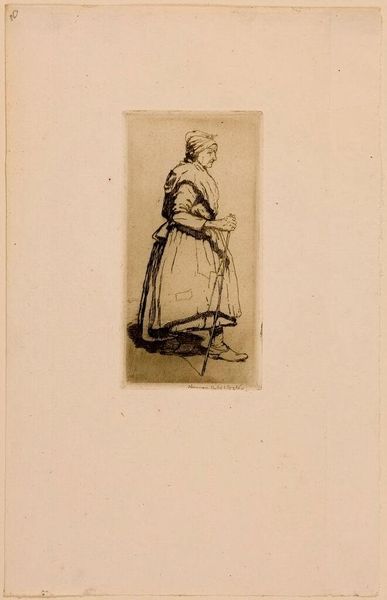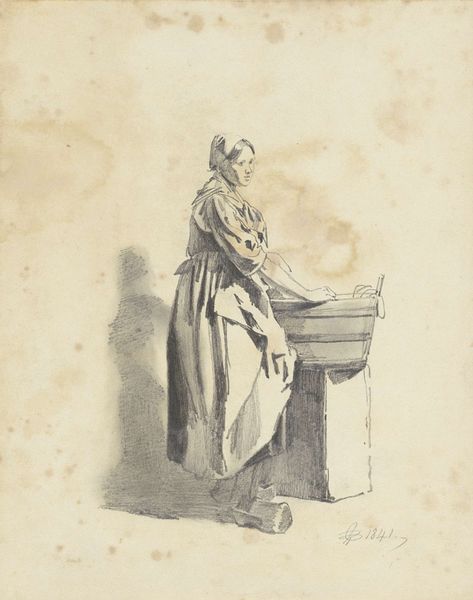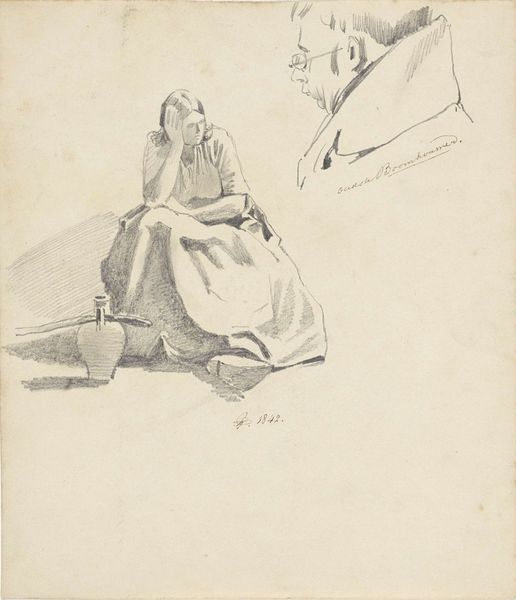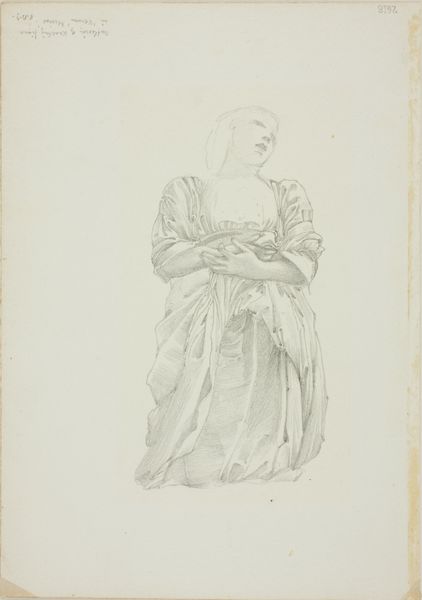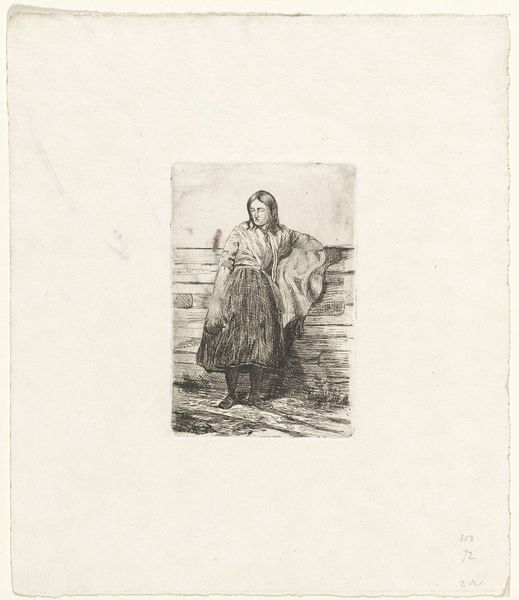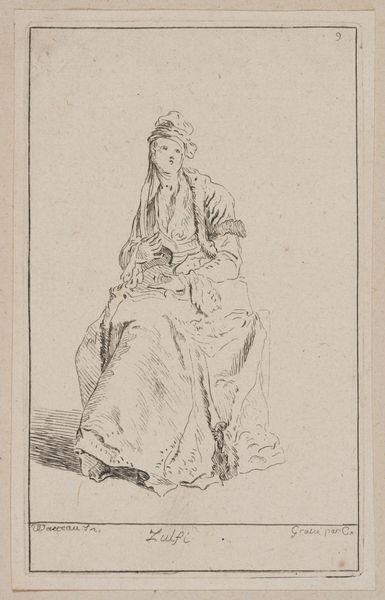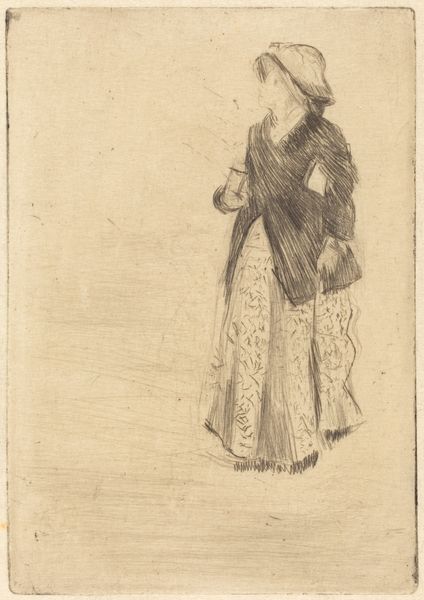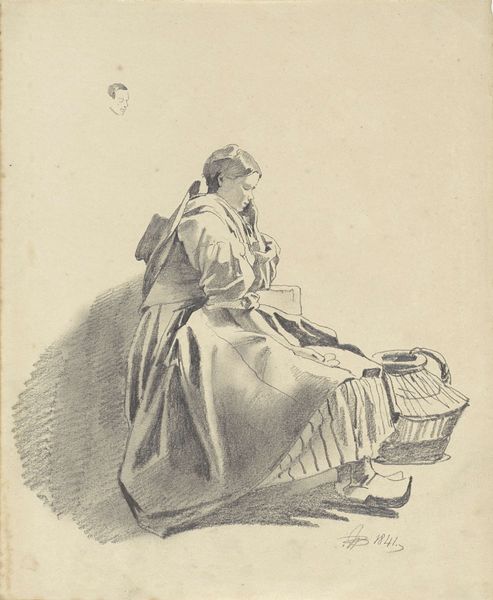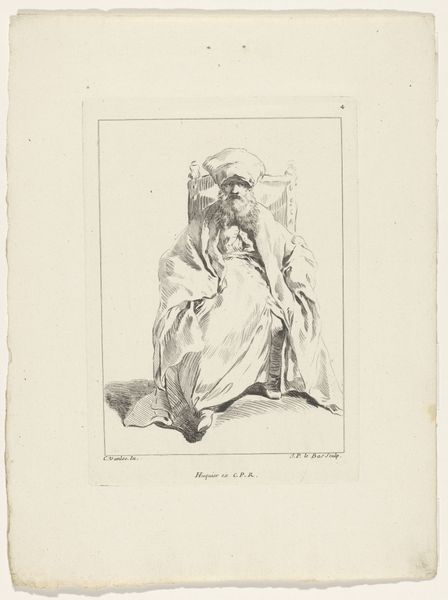
drawing, pencil
#
portrait
#
pencil drawn
#
drawing
#
pencil sketch
#
figuration
#
pencil drawing
#
romanticism
#
pencil
#
portrait drawing
#
realism
Dimensions: height 253 mm, width 210 mm
Copyright: Rijks Museum: Open Domain
Editor: This is "Standing Woman," a pencil drawing created in 1841 by Pieter van Loon, housed in the Rijksmuseum. It's a rather delicate sketch, with subtle shading that gives the figure a soft, almost ethereal quality. What can you tell me about it? Curator: The drawing, created in 1841, provides a glimpse into the socio-cultural role of women in that era. Its creation aligns with a growing interest in depicting everyday life. Does her clothing tell you anything? What social class do you imagine she belongs to? Editor: The fabric drapes quite elegantly. However, her head covering and lack of ornamentation seem indicative of modesty or perhaps a lower socio-economic background. I'm curious, what function might this artwork have served? Curator: It probably wasn't commissioned in the way we typically understand the creation of formal portraits. Drawings like these often functioned as studies. Artists developed and refined their technical skills and learned about form. In that era, accurate depictions of people and social norms were central to public imagery. Van Loon’s choice to depict a common woman contributed to the artistic validation of common people in visual representation. Editor: That makes sense, seeing it as a study piece. Now I notice elements like the positioning of the head turned back toward the viewer; and the way the skirt is angled. These contribute to an engaging composition, while not betraying too much emotional affect. Curator: Yes, indeed. The subtle turn of her head invites the viewer into the scene, establishing a relationship that many portrait paintings of that period aimed for. Its reception then hinged on public expectations around how a person was represented visually. Think about how a drawing like this would circulate and be viewed in its time. Editor: It’s fascinating to consider this work in its historical context. I had initially viewed it as just a simple sketch, but it now represents broader social and artistic values. Curator: Precisely! And understanding those values helps us appreciate not just the artwork, but the world it came from.
Comments
No comments
Be the first to comment and join the conversation on the ultimate creative platform.
